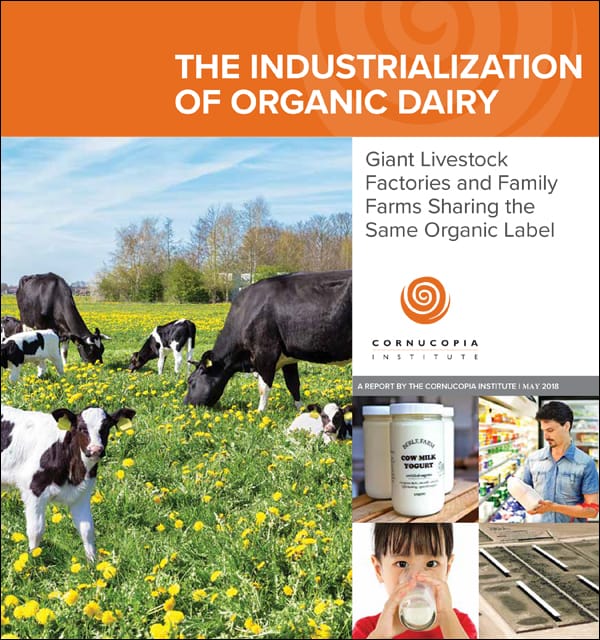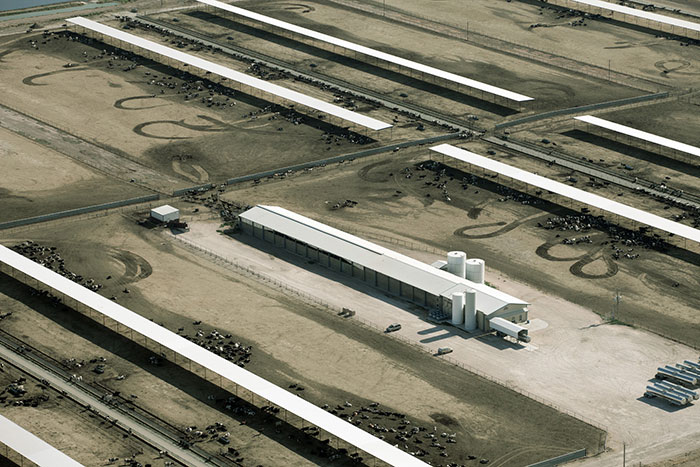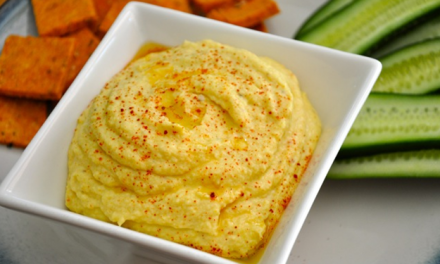Newly Released Report, and Associated Organic Dairy Brand Scorecard, Enables Defrauded Consumers and Wholesale Buyers to “Vote with Their Pocketbooks”
 When commercialized in the 1980s, the organic dairy movement was viewed by many farmers as opting out of a rapacious agricultural marketing system that had already driven the majority of dairy farm families off the land over the preceding two decades. Now, a quarter century later, history is repeating itself with giant “factory farms” flooding the organic dairy market with fraudulent “organic” milk and economically devastating family businesses and rural communities.
When commercialized in the 1980s, the organic dairy movement was viewed by many farmers as opting out of a rapacious agricultural marketing system that had already driven the majority of dairy farm families off the land over the preceding two decades. Now, a quarter century later, history is repeating itself with giant “factory farms” flooding the organic dairy market with fraudulent “organic” milk and economically devastating family businesses and rural communities.
According to the latest USDA records, organic milk production jumped 18.5% in 2016 alone, far eclipsing the growth in market demand. As a result, wholesale purchasers of raw organic milk have cut prices to farmers by 25-30% or more. In addition, some buyers have set quotas, mandating production cuts, further impacting cash flow. The largest organic dairy name brand, Horizon, owned by Groupe Danone of France, is terminating contracts with some farmers, at a time when there are no alternative markets available. Industry experts have called the moves by the world’s largest dairy a “death warrant” for farmers.
RELATED STORY:
With the glut of organic milk, and the USDA abdicating their legally-mandated oversight responsibilities, authentic organic farmers and their customers are poised to band together to take their fight to the dairy coolers of the nation’s groceries and specialty retailers.
The Cornucopia Institute, a prominent organic industry watchdog, has just released a comprehensive history and study of the industry, exposing how factory farms, some milking as many as 15,000 cows in desert-like conditions in the Southwest, are defrauding consumers by depriving them of the documented nutritional superiority in pasture-based organic dairy production.
The report includes a companion Organic Dairy Scorecard rating approximately 160 brands in terms of their authenticity and quality of production.
“With the USDA’s failure to protect ethical industry participants and consumers from outright fraud, using our Organic Dairy Scorecard is a way for organic stakeholders to take the law into their own hands,” said Mark A. Kastel, Codirector and Senior Farm Policy Analyst of The Cornucopia Institute. “In every market and product category, consumers can vote in front of the dairy case to economically support authentic organic farmers while simultaneously protecting their families.”
With the support of a growing legion of consumers looking for safer and more nutritionally dense food, the organic industry has grown into a $50 billion juggernaut. No longer do consumers have to go out of their way to buy organic produce, dairy products and processed foods at specialty retailers like Whole Foods or the nation’s 300 member-owned natural food cooperatives. Costco is now the largest organic retailer in the country, with Walmart, Target, Kroger, and many more of the country’s major food retailers rapidly expanding their organic offerings.
The dairy scorecard rates brands in terms of their procurement practices, separating major industry players, like the private-label milk brands at big-box retailers that exclusively source from mega-dairies, from the many smaller family-owned operations where cows often have names, not numbers.
“Unlike the industrial dairies, true organic farmers concentrate on soil fertility and nutrient-superior milk production from fresh pasture, and end up with cows that live long and healthy lives in comparison to ‘organic’ industrial dairies that are so similar to the inhumane and ecologically damaging conventional factory farms consumers condemn,” said Ed Maltby, a longtime industry observer and Executive Director of the Northeast Organic Dairy Producers Alliance.
True organic, pasture-based production produces milk with higher levels of omega-3 fatty acids and beneficial antioxidants. Testing, done as part of an investigative report in 2017 by The Washington Post, found milk from Aurora Organic Dairy, the industry’s largest supplier to grocery chains like Costco, Safeway and Walmart, was nutritionally deficient compared to organic family-scale production.
“Consumers are being ripped off. My family and I have dedicated ourselves, as have the majority of the over 2,000 organic dairy farmers in this country, to creating a superior product in terms of both flavor and nutrition,” said Kevin Engelbert, who was the first certified organic dairy farmer in the country in the 1980s. “The inaction by the USDA in enforcing the law is depriving consumers of the healthful benefits they are seeking and competitively damaging ethical farmers.”
RELATED STORY:
Engelbert, who farms in Nichols, New York, was appointed by the Secretary of Agriculture during the Bush administration to serve on the USDA’s National Organic Standards Board (NOSB) charged by Congress to review and recommend regulations protecting organics farmers and their customers.
“Nonprofit, public-interest groups like Cornucopia should not have to go to the expense of researching comparative brands that are and are not meeting the organic standards. That’s supposed to be the job of the USDA and, through successive Democratic and Republican administrations, they have woefully failed in their responsibilities,” Engelbert added.
To illustrate the grotesquely disproportionate scale of some of the organic “dairies” operating in the semi-desert conditions of Texas, Idaho, Colorado and California, the Lone Star State alone produces 1.4 times more organic milk than Wisconsin, the state with the most organic dairies—even though Wisconsin, commonly known as America’s Dairyland, has 75 times more organic producers (453 versus six, according to the most recent USDA data).
 |
organic dairy “farms” in Texas creating more milk than over 450 authentic organic farms in Wisconsin |
A decade ago, federal investigators found Aurora in “willful” violation of 14 tenets of the organic law. After career civil servants recommended they be banned from organic commerce, Aurora was allowed to continue to operate, without paying a fine, by the Bush USDA.
The Cornucopia Institute’s Kastel added, “After the Bush years we didn’t think things could get any worse, but the Obama administration appointed organic industry insiders who sold out the values the movement was founded upon in deference to short-term corporate profit.” He continued, “When the last administration took over, they proclaimed it the ‘age of enforcement’ but, if anything, the system became even more gamed in favor of corporate agribusiness and their lobbyists at the Organic Trade Association.”
The Obama USDA dismissed evidence-filled complaints compiled by Cornucopia that employed aerial and satellite photography of the giant dairies confining their cattle to sheds or feedlots instead of grazing. After the heat was turned up by the Post’s investigation, USDA staff visited Aurora’s largest operation in Colorado, managing over 20,000 head of cattle. But they conveniently made an appointment to do so.
“Whoever heard of a law enforcement agency calling up a suspected meth lab and setting up a mutually convenient appointment to carry out a search?” said Francis Thicke, a longtime certified organic dairy farmer from Fairfield, Iowa and a former Obama-era appointee to the NOSB.
If some industry observers were hoping the Trump administration would right the listing organic ship, they are likely already disappointed. During its relatively short tenure, the director of the USDA National Organic Program has left under an ethical cloud, and the department has expressed their tacit approval for growing organic fruits and vegetables without soil in giant hydroponic greenhouses and scuttled a regulation, just set to go into effect, that would have forced factory farm egg producers to offer outdoor access to their birds (an existing legal requirement that continues to be skirted).
RELATED STORY:
“The good news is that for every type of product, fluid milk, cheese, butter, ice cream, and more, consumers can have continued confidence in organic dairy foods by locating the most reputable brand on the Cornucopia organic brand scorecard,” said Kastel. “Parents who have made the decision to switch to organic food, wanting to lower the toxic load and increase the nutritional value of the food they are serving their children, are not about to go back to conventional products. The scorecard allows the most important participants in the organic industry, consumers, to have the final say in this controversy.”
MORE:
“Between livestock factories producing ‘organic’ dairy, meat, and eggs, produce grown in hydroponic factories without the hallmark of organic nutrients/soil stewardship, and imports of grains that have proven to be fraudulent, the USDA’s gross lack of fulfilling their oversight and enforcement responsibilities is forcing consumers to do their own research,” Kastel added.
Decades ago, Kastel, and many other early organic movement proponents, suggested switching to organic production, a style of agriculture shunning toxic agrichemicals, drugs, and genetic engineering, practicing rigorous environmental stewardship, and subscribing to a more humane animal husbandry model — an approach to farming and marketing that, for the last quarter century, has allowed a humane scale of agriculture to economically survive.
“During the Nixon administration, Secretary of Agriculture Earl Butts’ message to farmers was, ‘get big or get out,’” stated Kastel. “With margins being squeezed by giant industrial-scale dairies, most family farmers didn’t really have a choice in the matter and were forced out of business.”
Organics was viewed as a viable and economically sustainable alternative for family-scale dairy producers until the recent crash in farmgate milk prices.
To aid marketplace research, Cornucopia has updated both its Organic Dairy Report and its Organic Dairy Scorecard. When it was first published in 2006, the scorecard listed 68 organic brands. The updated scorecard will feature information on a total of over 160 certified organic dairy brands. The products, both name brand and private-label (store brand) options, are rated on the basis of a questionnaire, site visits, aerial photography and satellite imagery, and data mining of state and federal regulatory records.
Recently, the USDA’s National Organic Program announced that it would be more closely scrutinizing some of the largest, suspect dairies. “In the past,” said Kastel, “the USDA’s activities have been more focused on burnishing the reputation of the program, and the certifiers they oversee, rather than judiciously cracking down on overt illegalities.”
Kastel opined that this new announcement could be a direct response to the public pressure it received when it “inspected” a massive Aurora Dairy facility last year after alleged wrongdoings were profiled in the Washington Post. In that case, the USDA was criticized for making an appointment to verify if the cattle were being properly grazed.
“There are businesses marketing milk that skirt organic regulations,” says Marie Burcham, JD, Farm and Food Policy Analyst for Cornucopia and lead researcher on the dairy project. “These dairies harm the environment, compromise the nutritional content of organic dairy products, and sacrifice the well-being of livestock. Essentially, they echo the practices of the conventional livestock market.”
“Of special importance,” states Burcham, “is the ability to differentiate these brands on the store shelf, because not everyone can take the time to do the background research that is sometimes needed in our complex food market. The scorecard does just that—letting people know how brands rate on things like grass feeding, dedication to pasturing, how the calves are treated, and so much more.”
The Cornucopia Institute, a farm-policy research group based in Wisconsin, has also published scorecards empowering consumers and wholesale buyers to make discerning marketplace decisions in their purchases of eggs, soy foods, breakfast cereals, and other certified organic products.
The new Organic Dairy Scorecard is mobile-friendly, allowing users to check brand ratings, in real-time, while shopping.
*Article originally appeared at The Cornucopia Institute.












